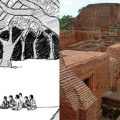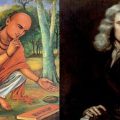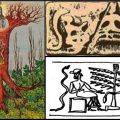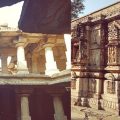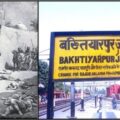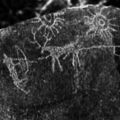16 Ancient Universities of India: From 3600 Plus Years Ago
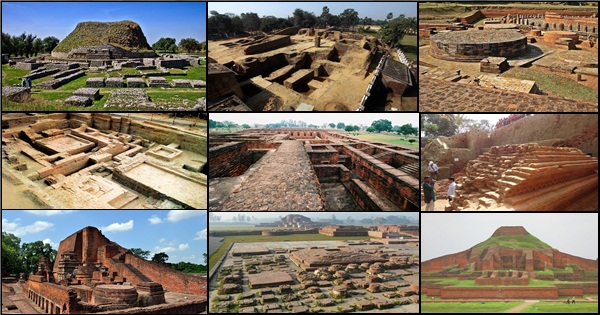
Mark Twain, the famous American writer, entrepreneur, publisher, and lecturer has rightly said, “India is the cradle of the human race, the birthplace of human speech, the mother of history, the grandmother of legend, and the great grandmother of tradition. Our most valuable and most instructive materials in the history of man are treasured up in India only.”
How was education imparted down the ages in India before the establishment of ancient universities? Since antiquity, thousands of Rishis chanted mantras and hymns and stockpiled the powerful positive energies in the atmosphere around. These were handed down from one generation to another through memorization by word of mouth. The Rishi, also the Guru who imparted the knowledge to his shishyas or sons, continued with this tradition through remembrance. Vedas are also called Shruti. The same was heard, remembered, chanted, and the cycle continued until they were compiled. For hundreds and thousands of years before they were compiled, they were Shruti. This is the reason why when one listens to Sanskrit chants from the Vedas and other scriptures, the positive energy is added and the aura around further energized. Each Rishi, who imparted knowledge, symbolized a Vedic school in the true sense in ancient times.
In later Vedic period and during the Mahabharata era, students in groups, stayed at the Guru’s ashrams until their education was completed. Bigger Gurukulas served as universities, i.e. centres of higher education. Thereafter, in addition to Gurukulas and universities, temples and mutts emerged as learning centres.
Preservation of ancient culture, study of the scriptures, character building, development of personality, religious duties, inculcation of the spirit of individual roles towards family and society, discipline and self-dependence were the key factors considered while imparting education. Though thousands of temples and educational institutions were destroyed by Islamic invaders, the concept of temple education declined to some extent but not fully. The educational flame was kept alive. Under Islamic rule, the temples which were earlier run under the patronage of the rulers, were then supported by the local Hindu population. According to the book The Beautiful Tree by Shri Dharampal, temples were not only the centres of primary education for all Varnas but also a nuclei of important social, economic, artistic and intellectual functions.
India is home to numerous ancient universities, spread across her length and breadth. Students from across the world came and studied in these learning centres. Here are 15 ancient universities of India, re-discovered through excavations and as standing structures. More excavations will lead to more discoveries of our glorious past.
1. Taxila or Takshashila University
It is believed Kuru prince Duryodhana laid the foundation of Takshashila University at the birthplace of his mother Gandhari. This region, which finds mention in the Mahabharata and other ancient Hindu scriptures as ‘Gandhara’ is presently in Rawalpindi district of Pakistan. Many ancient Indian physicians, politicians, grammarians, rulers, authors, and astronomers studied at this centre of learning. Worth mentioning were Sanskrit linguist and grammarian Panini; physician Charaka; Surgeon Jivaka Komarabhacca; philosopher, economist, jurist and royal advisor Chanakya; author Vishnu Sharma; Maurya emperor Chandragupta, and the list goes on. According to the book The Chronology of Ancient India – Victim of Concoctions and Distortions by Vedveer Arya, the Maurya dynasty flourished in 16th century BCE, which means Chanakya and Chandragupta Maurya lived around 3600 years ago. This corroborates the antiquity of Takshashila University to be over 3600 years old!
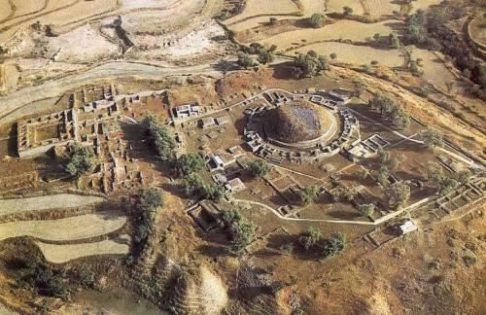
Takshashila University; Courtesy: Diary Store
Over sixty courses pertaining to different subjects were taught at Takshashila University. It was a centre of only higher education. The age eligibility criteria was set at 16 years. A student enrolled at this learning centre had the liberty to choose any subject of his choice. Subjects taught were the Vedas, Vedanta, Vyakaran, Ayurveda, Surgery, eighteen crafts (Sippas), Military education including warfare and archery, Astronomy, Agriculture, Commerce, Politics, and more. Over 10,500 students from across Aryavrat and from places as far as Greece, Arabia and China studied in this university. It was a residential campus where thousands of teachers taught.
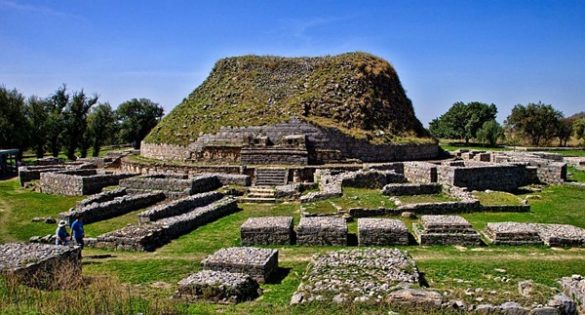
Takshashila University; Courtesy: Booksfact
2. Mithila University
Though mainstream records hardly mention about Mithila University, this learning centre had been in existence since the time of Raja Janak, the father of Sita. The reason is the lack of archaeological finds dating back to the ancient period. It was prominent seat of Brahmanical system of education. Here Raja Janak held religious conferences where Rishis and the learned took part.
This university taught literature and fine arts, science subjects, the scriptures including the Vedas, Nyaya Shastra, and more. 12th century Indian mathematician and philosopher Gangesha Upadhyaya founded a school of New Logic (Navya-Nyaya) at this site where he wrote Tattva Chintamani. Two subjects that later gained prominence in Mithila University were Nyaya (jurisprudence) and Tarka Shastra (Logic).
Examination was tough. Students attained and received degrees only after they cleared the Salaka-pariksha (test) at the completion of their education.
3. Telhara University
This ancient learning centre is located at Telhara, at a distance of around 40 km from Nalanda University in Bihar. Archaeologists have traced the remains of this centre during the course of an excavation at Telhara, which began in 2009. The ruins were discovered in 2014. Chinese travellers Hiuen Tsang and Itsing have mentioned in their travel accounts about Telhara University as a seat of higher research and a competitor to Nalanda University.
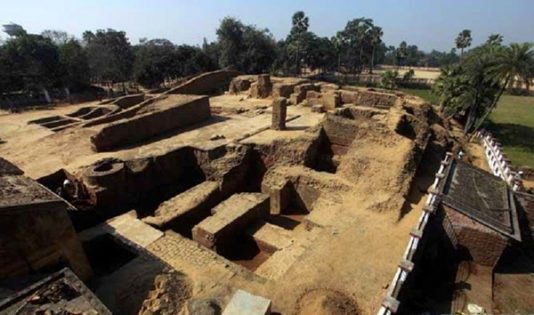
Telhara University; Courtesy: The Mysterious India
Bricks that were used to lay the foundation of the university and sprinklers made of clay date back to the Kushana period, which corroborates it to be older than Nalanda University. According to a research piece ‘The Chronology of Kushanas’ by Vedveer Arya, the Kushana empire flourished in between 12th to 8th century BCE. This suggests that Telhara University is at least 3000 years old. Hiuen Tsang wrote about a three-storeyed structure, prayer hall and a platform to seat over 1,000 monks and students of Mahayana Buddhism at this university, the evidence of which were found during the excavations. It was also a centre of Tantric Buddhism.
During the excavation work, the ASI team stumbled upon a 1.5-foot-thick layer of ash. This suggests that the Telhara university was destroyed and burnt. It was destroyed and set on fire by Bakhtiyar Khilji during the same time when he destroyed Nalanda University, i.e. in 1193 CE. Khilji destroyed three ancient universities of India.
4. Sharada Peeth Temple University
This temple university once flourished as one of the biggest centres of learning in ancient India. Kashmir is also known as Sharada Desh going by the name of the temple. The Sharada script owes its development and popularisation from Sharada Peeth temple university. This ancient centre of learning now falls under Azad Kashmir jurisdiction of Pakistan. Many famous scholars from India and neighboring countries studied in this temple university. Few scholars worth mentioning are Kalhana, historian and author of Rajtarangini, a history book on Kashmir in Sanskrit; Philosopher Adi Shankara who consolidated the doctrine of Advaita Vedanta; Vairotsana, a Tibetan translator; Kumarajiva, a Buddhist scholar and translator; Thonmi Sambhota, a Tibetan scholar who invented the Tibetan script as per accounts by traditional Tibetan sources.
The timeline of the establishment of Sharada Peeth Temple University is unknown. Going by records of scholars who studied here, Adi Shankara was a student here. According to the book Chronology of Ancient India by Vedveer Arya, Adi Shankara lived in the 6th century BCE. This timeline is against the distorted datings of the chronological history of India. Going by this timeline, literary records of existence of Sharada Peeth Temple University dates back to at least 2500 plus years. But the learning centre must be several thousands years old.
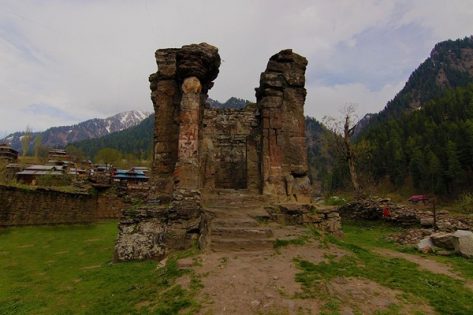
Sharda Peeth; Image source: Wikipedia
Sharada Peeth is one of the 51 Shaktipeeths; Sati’s right hand fell at this place and Bhagwan Vishnu cut her dead being into 51 pieces, which fell in 51 locations.
5. Nalanda University
This ancient center of higher learning, located in the ancient kingdom of Magadha, presently seven miles north of Rajgriha in Bihar, is one of India’s oldest universities. A seal identifying a monarch named Shakraditya believed to be Kumaragupta I, a Gupta emperor, is considered the founder of Nalanda University. As per Vedveer Arya’s book Chronology of Ancient India, the Gupta era commenced from 335 BCE. As the foundation of Nalanda University was laid by a Gupta Emperor, this learning centre flourished from the last years of BCE. This means Nalanda University is over 2000 years old! It was a principal seat of learning, attracting students from as far as Tibet, China, Greece, and Persia, and beyond until the Turkish invasion of 1193.
Nalanda University followed highly formalized methods of Vedic learning besides teaching the principles of Buddhism. Nalanda attracted Buddhist monks from far and near, as its was the birthplace of Gautam Buddha’s favorite disciple Sariputta. This led to construction of several viharas and grew in importance as a centre of the Mahayana branch of Buddhism. There have been evidences of kings from foreign lands donating for the building of structures within the Nalanda University complex. There is archaeological evidence of a Shailendra king of Indonesia who built a structure within the campus.
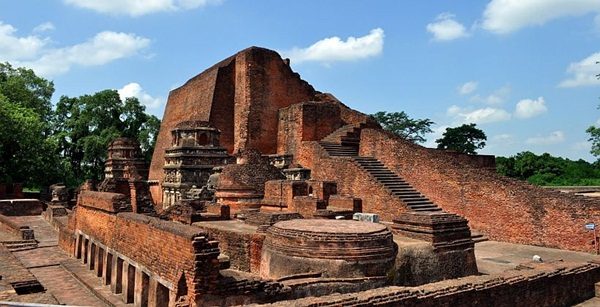
Nalanda University; Courtesy: Booksfact
Admission in Nalanda University was tough. Students had to sit for an entrance exam. According to an account by Chinese traveler, Buddhist scholar, and translator Hieun-Tsang, only about 20 percent of the students who sat for the entrance tests, succeeded. The eligibility criteria on age was set at twenty years. Education was provided free of cost. There were three methods of teaching, namely verbal and explanatory, lectures and debates and discussions. Around a 100 lectures were delivered everyday and it was compulsory for the students to attend the lectures.
This centre was a residential seat of learning and the campus contained 10 temples, classrooms, meditation halls, monasteries, dormitories, etc. including lakes and parks spread across eight compounds. The university accommodated over 10,000 students and 2,000 teachers. Subjects taught ranged from Mahayana Buddhism, the Vedas, Logic, Sanskrit Grammar to Medicine, Samkhya, and more subjects on every field of learning. According to traditional Tibetan sources, the library at Nalanda University was spread over three large multi-storeyed buildings. One of these buildings had nine storeys that housed the most sacred manuscripts.
Nalanda University was destroyed by Bakhtiyar Khilji, a Turkish Muslim plunderer, in 1193 AD. He set fire to the libraries and killed the Acharyas and students. According to an account by Persian historian, Minhaj-i-Siraj in his book Tabaqat-i Nasiri, the manuscripts burnt for several months. This proves that Nalanda University libraries accommodated lakhs of manuscripts. Such a huge loss of India’s ancient knowledge heritage! Imparting of education continued the small way after repairs for the next few hundred years.
6. Vallabhi University
This university was set up in line with Nalanda University by the kings of the Maitraka dynasty. Maitrakas were feudatories of the Guptas, who established their capital at Vallabhi in Saurashtra of Gujarat during the last years of BCE, as per an acount by Vedveer Arya in his book Chronology of Ancient India. This proves that the university is at least 2000 years old, almost as old as Nalanda University! This centre of learning flourished till the 12th century.
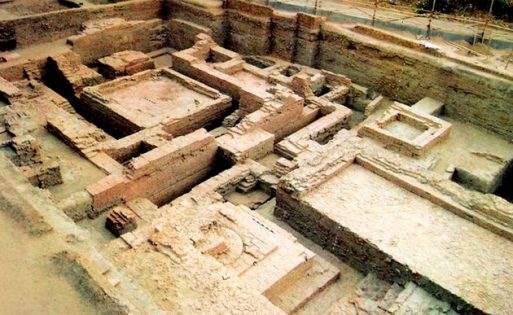
Vallabhi University Courtesy: Booksfact
Vallabhi University taught several subjects including Economics, Law, Politics, Medical Science, Book-keeping, Literature, Vyakaran, and Hinayana Buddhism. It accommodated a huge library. The quality of education imparted was superlative. It attracted students from every corner of Aryavrat including neighboring countries. Students who attained a degree from this university were held in high esteem across the country and were conferred high posts in administration in kings’ courts. According to an account by Chinese traveler Itsing, who studied at Nalanda and visited Vallabhi University during the 7th century, it was a great center of learning. This centre was renowned for religious tolerance and mental freedom. Vallabhi University earned the patronage of not only the rulers but also the rich of the region.
The Arabs destroyed this university in the 8th century. Like Nalanda University, imparting of education continued the small way after repairs for the next few hundred years.
7. Pushpagiri University
This centre of learning, located in ancient Kalinga, across Cuttack and Jajpur districts of present Odisha, was established in the last years of BCE. Pushpagiri University is as old or older than Nalanda University. There are claims (though not proven) that it was established by Emperor Ashoka himself. The university campus was spread across three adjoining hills – Lalitgiri, Ratnagiri and Udayagiri. The centre taught many different subjects and attracted students from across the world.
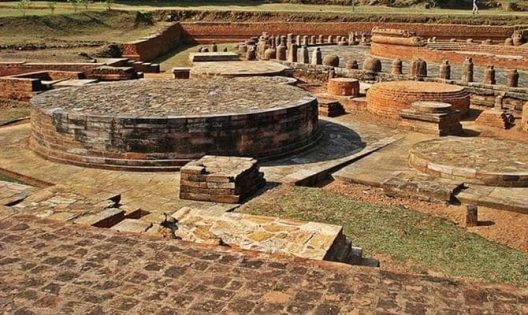
Pushpagiri University; Courtesy: Gyanpro
Pushpagiri University finds mention in the writings of Chinese traveller Xuanzang, who visited India in 7th century. Most universities and Gurukulas earned the patronage of not only local rulers but also rulers and the rich from far off places. A 3rd century inscription of Andhra Ikshvaku king Virapurushadatta mentions about the donations given by the king for the setting up of a stone mandapa at the university. 9th century Buddhist monk Prajna from Gandhara also spent some time at this university.
Lack of patronage due to Muslim invasions led to the decline of this important learning centre.
8. Odantapuri University
This university was set up in Odantapuri, also called Uddandapura in Bihar, then Magadha, by Pala king Gopala in the early 7th century. Vedveer Arya’s of Ancient India book Chronology, finds mention of Gopala based on an inscription about his victory over Chandella ruler dated 618-619 CE.
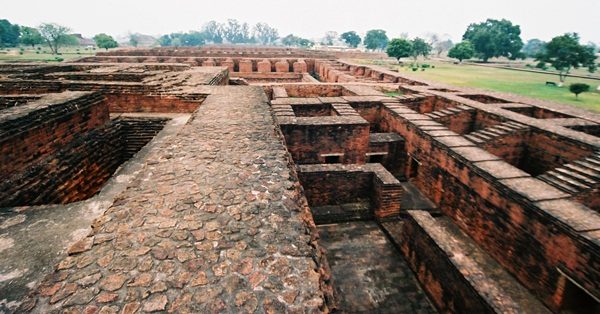
Odantapuri University; Image Courtesy: exploremytour.com
Odantapuri University attracted students from far and near, but could not attain much fame like Nalanda or Vikrtamshila. According to the Tibetan sources, the learning centre accommodated around 12,000 students at some point of time. Subjects taught ranged from the Vedic scritures to Buddhism. Acharya Sri Ganga of Vikramashila was a student from this university.
9. Vikramshila University
This learning centre, located 50 km east of Bhagalpur in Bihar (then northern Magadha), was established by Pala king Dharampala in the later 7th century. Dharampala was the son of Gopala, who established Odantapuri University. This proves that the Pala rulers of Bengal and Bihar gave great importance to education.
Vikramshila University attracted students from across the country and foreign nations. Over 100 teachers taught over 1000 students here. Like all ancient universities, this learning centre also housed several temples. Around 108 scholars were appointed as the in-charge of the various temples. Six additional Acharyas were appointed for supervising and managing the temples and the learning centre. The Kulpati or Mahasthavir, generally elected, was the highest authority of the University. There were six huge colleges with a big building at the centre. This central building was termed Vigyan Bhawan. All buildings were connected through six gates. A Dwar Pandit was appointed to keep guard at the main gate. His duty was to examine candidates, who came to seek admission in the University.
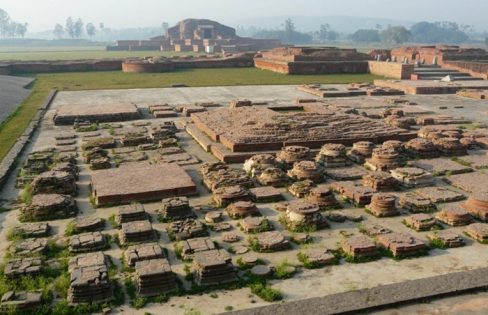
Vikramshila University
Subjects taught at Vikramshila University included Logic, Philosophy, Vyakaran, Tantra Shastra, Karamkanda, and more. Later, Tantra Shastra was the main subject that attracted and influenced more students. Atiśa Dipankara, a founder of the Sharma traditions of Tibetan Buddhism, was one of the students from this University.
Bhaktiyar Khilji, who destroyed Nalanda University, destroyed Vikramshila University in 1203 CE. Like in Nalanda, he killed the monks and students at this university.
10. Somapura University
Pala king Dharampala also established Somapura University in the later 7th century. This university was almost as big or bigger than Nalanda University. The centre taught a wide range of subjects pertaining to Hinduism, Buddhism, and Jainism. Influence of the three traditions is still visible in the ornamental terracotta carvings on the outer walls of the university. Students from across the country and beyond came to study at this learning centre.
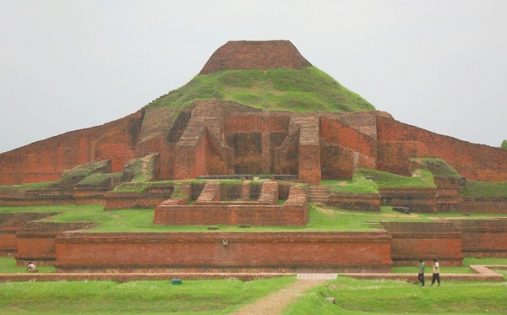
Somapura University: Courtesy: Wikipedia
Somapura University flourished for more than 400 years till 12th century. Later lack of maintenance and attack by Muslim plunderers led to the decline of this important learning centre.
11. Bikrampur University
Dharampala also established Bikrampur University in the late 7th century at Munshiganj in Bengal, presently Bangladesh. Excavations in 2013 led to the discovery of this learning centre.
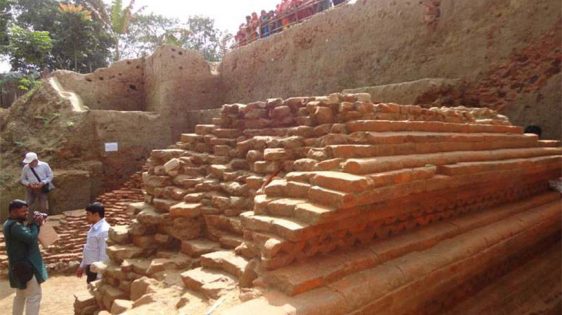
Bikrampur University Courtesy: Mother Nature
Bikrampur University attracted students from across the country and the world from as far as China, Tibet, Nepal and Thailand. The centre taught a wide range of subjects with special importance to Buddhist education. During 11th century, the centre attracted around 8,000 students, both local and foreigners.
12. Morena Golden Triangle University
Morena in the Chambal division of Madhya Pradesh was a hub of university education from the 8th century. An inscription found in the Chaunsath Yogini temple in Mitavali mentions about Mitavali, Padavali and Bateshwar temples as a Golden Triangle within which a famous university existed. The temples in these three regions date back from 8th to 12th century. The temples were built by the Gurjar Pratihars and later expanded and renovated by the Kachchhapaghata rulers. The Padavali temple was later renovated by the Jat Rana rulers of Gohad.
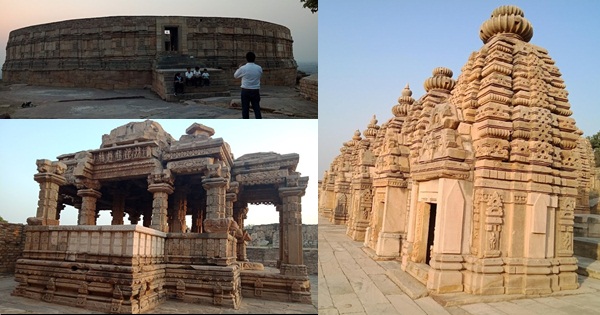
These three places in Morena hosted learning centres for different subjects. At the Chaunsath Yogini temple, Astrology and Mathematics were taught. Teachers banked upon the rays and shades of the Sun for certain calculations! The rays of the sun fell in the temple in distinct designs and patterns given the circular structure. Bateshwar temples were the centre, the nucleus of the Golden Triangle University.
Gerd Mevissen, an independent researcher from Berlin, who specialises in epigraphy of temples, also suggests that Bateshwar temples site was ‘once a hub for temple-related arts and artists’. Most of the temples that depict a fusion of different temple building styles suggest that artists and students fused and experimented with a variety of temple building ideas. The premise of Garhi Padavali complex is huge, which speaks volume about the learning centres it must have housed and the students and teachers it must have accommodated.
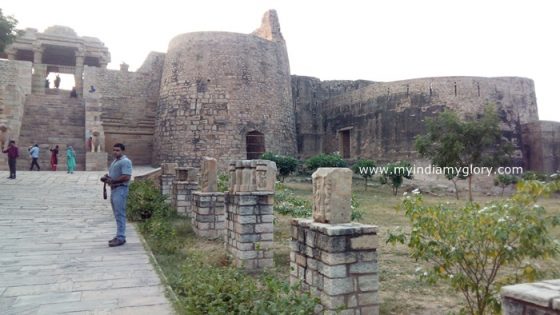
Padavali fort and temple; one part of the Golden Triangle University
13. Kanthalloor Sala University
Excavations in the southern part of India are yet to happen on a large scale. Archaeological excations in Keeladi, also called Keezhadi, in Tamil Nadu led to the discovery of a civilization dating back to around 2500 to 3000 years. Once the excavation is complete, more facts will come to light. What if a university existed in the vicinity? Valiyasala in Thiruvananthapuram of Kerala is home to Kanthalloor Sala – one of the most famous universities of India. It dates back to 9th to 12 century. Located within the premise of a group of temples, Kanthalloor Sala University taught 64 different subjects including atheism. Students from across the country and beyond borders including Sri Lanka came to study in this temple university.
Ennittum Kanthalloor, a documentary by Kishore Kallara on Kanthalloor Sala University, features volume about the educational system of the bygone days in this region. This university was also called Nalanda of the south. The documentary is based on several evidences, both archaeological and literary. According to the documentary, the university provided training to students on the art of weaponry. The educational centre was known for following a strict educational and disciplinary code and for banning corporal punishment and brawls within the campus. Those who broke the code and the rules were fined.
14. Jagaddala University
Jagaddala University was set up by Pala king Rampala in the early 11th century in Varendra in North Bengal, now in Bangladesh. Tibetan sources mention five great ancient universities that also included Jagaddala, the other being Nalanda, Odantapuri, Vikramashila, and Somapura. According to the same source, the five ancient universities formed a network under state administration and were interlinked.
Jagaddala taught a wide range of subjects including Sanskrit, as taught in the other interlinked universities. One of the special subjects taught was Vajrayana Buddhism. Subhāṣitaratnakoṣa, one of the earliest dated anthologies of Sanskrit verses, is believed to be compiled by Buddhist scholar and poetry anthologist Vidyakara at this university. Besides, a large number of Tibetan sacred texts were composed or copied at Jagaddala University.
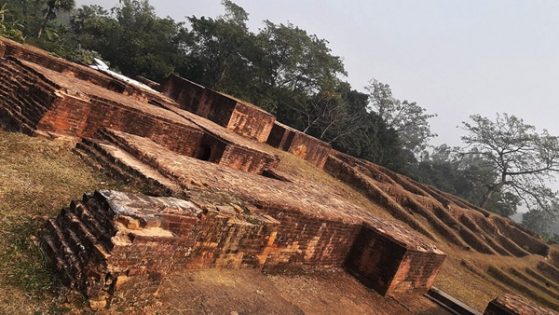
Jagaddala University; Courtesy: Wikipedia
This university flourished for a little more than hundred years until Muslim plunderers destroyed it in around 1207.
15. Nadia University
Nadia, formerly called Navadweep, located at the confluence of Ganga and Jalangi rivers in Bengal, was set up after the destruction of Nalanda and Takshashila universities. Many subjects including Logic, Vyakaran, Politics and Law were taught here. There were three centers, namely Navadweep, Shantipur and Gopaalpura, at the university site. There have been records of students studying for as long as 20 years.
15th century Indian philosopher and logician Raghunatha Shiromani set up a school of Logic at Nadia University. Since then discussions were part of the curriculum and were considered to be the essential qualification of a teacher of this university. Students seeking admission and teachers appointed were required to give a test on this quality.
Nadia University produced innumerable scholars from time to time. Worth mentioning are Jaideva who composed Gita Govind.
Excavations led to the unearthing of several of the aforementioned ancient universities, which find mention in numerous ancient records including accounts by foreign travelers to India. More excavations will lead to more discoveries. It is time the citizens of India, who are driven by the notion that British civilized India, should emerge from the covering of the fake pupa and discard the colonial mindset. When India was civilized with foreign students basking in India’s knowledge heritage, British then had no identity of their own.
16. Nagarjuna Vidyapeeth
Nagarjuna was an ancient Indian Buddhist philosopher from Andhra Pradesh. Nagarjuna Vidyapeeth is dedicated to him. This ancient university was located on the banks of the Krishna River. It flourished in peak during the 7th and 8th centuries. Students from foreign countries came to study here.
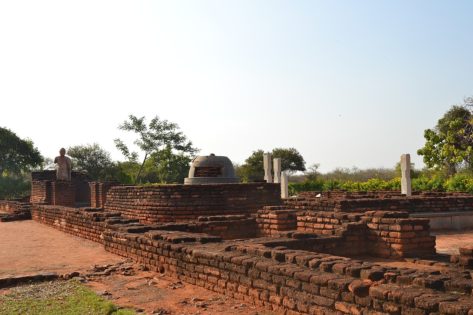
Ruins of Nagarjuna Vidyapeeth; Image Source: Wikimedia
The multi-storey library of Nagarjuna Vidyapeeth accommodated manuscripts pertaining to the various branches of knowledge from medicine, science to philosophy, minerology, geography including teachings of Buddhism.
Archaeological excavations at the site led to discovery of artefacts dating back to several hundred years before BCE. Other finds include coins issued by Satvahana rulers, inscription of Gautamiputra Vijaya Satakarni. Coins and inscriptions of Ikshvaku kings were also found at the Nagarjuna Vidyapeeth site.
Ref:
1. Education in Ancient India, A.S. Altekar
2. An Introduction to Hindu Culture: Ancient & Medieval, Harshananda Swami
3. History of Indian Education, PL Rawat
5. https://www.telegraphindia.com/states/bihar/tourism-boost-to-historic-telhara/cid/377651
6. https://www.thehindu.com/todays-paper/tp-national/after-nalanda-remains-of-another-university-found/article5585056.ece
7. https://www.edexlive.com/beinspired/2018/apr/18/kanthalloor-sala-the-1000-year-old-university-in-trivandrum-you-may-not-have-heard-of-2515.html
8. Research by self through few site visits.

